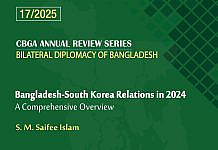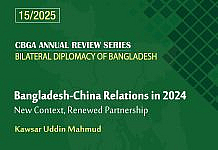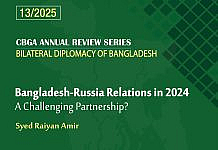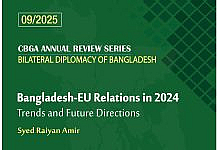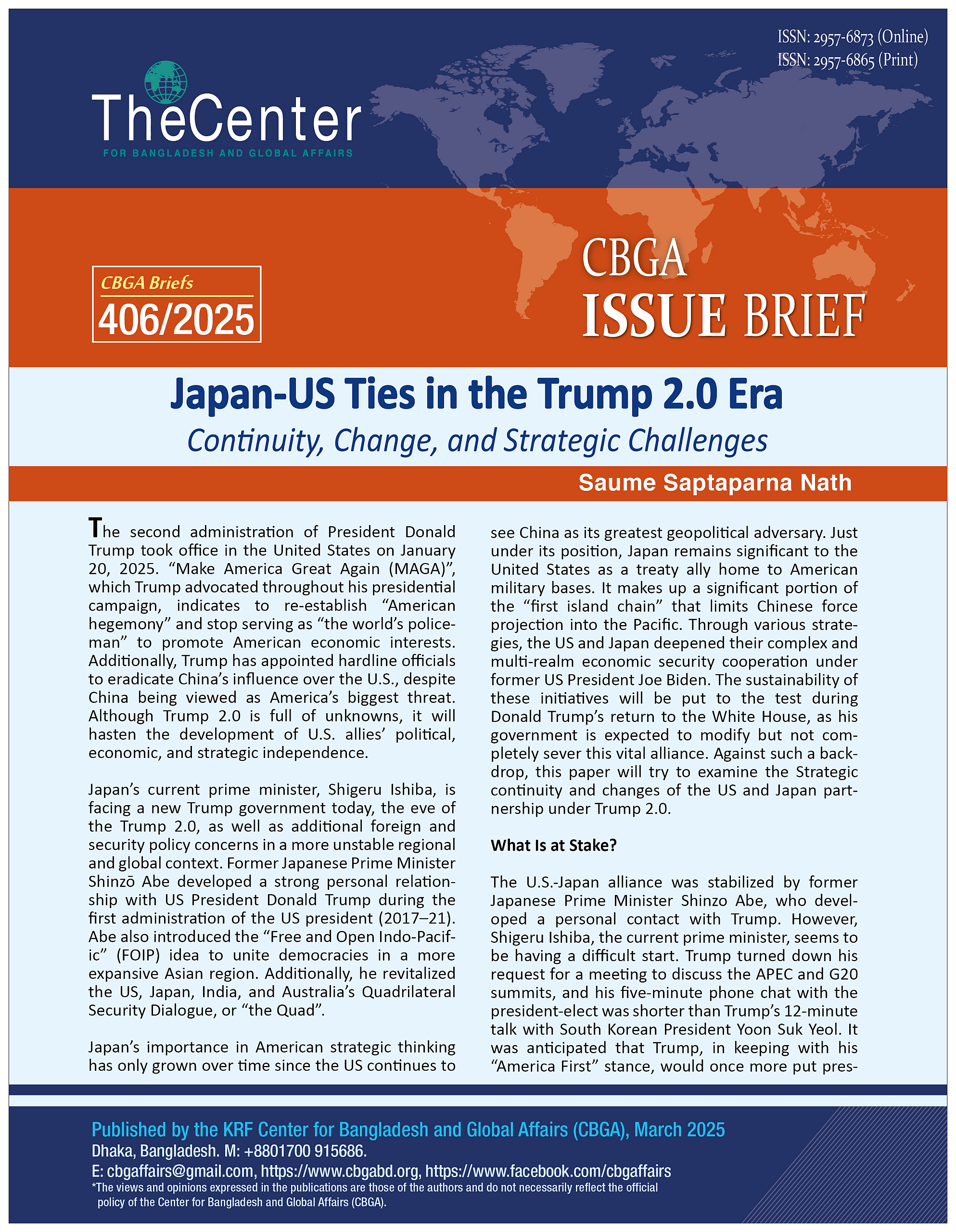
The second administration of President Donald Trump took office in the United States on January 20, 2025. “Make America Great Again (MAGA)”, which Trump advocated throughout his presidential campaign, indicates to re-establish “American hegemony” and stop serving as “the world’s policeman” to promote American economic interests. Additionally, Trump has appointed hardline officials to eradicate China’s influence over the U.S., despite China being viewed as America’s biggest threat. Although Trump 2.0 is full of unknowns, it will hasten the development of U.S. allies’ political, economic, and strategic independence.
Japan’s current prime minister, Shigeru Ishiba, is facing a new Trump government today, the eve of the Trump 2.0, as well as additional foreign and security policy concerns in a more unstable regional and global context. Former Japanese Prime Minister Shinzō Abe developed a strong personal relationship with US President Donald Trump during the first administration of the US president (2017–21). Abe also introduced the “Free and Open Indo-Pacific” (FOIP) idea to unite democracies in a more expansive Asian region. Additionally, he revitalized the US, Japan, India, and Australia’s Quadrilateral Security Dialogue, or “the Quad”.
Japan’s importance in American strategic thinking has only grown over time since the US continues to see China as its greatest geopolitical adversary. Just under its position, Japan remains significant to the United States as a treaty ally home to American military bases. It makes up a significant portion of the “first island chain” that limits Chinese force projection into the Pacific. Through various strategies, the US and Japan deepened their complex and multi-realm economic security cooperation under former US President Joe Biden. The sustainability of these initiatives will be put to the test during Donald Trump’s return to the White House, as his government is expected to modify but not completely sever this vital alliance. Against such a backdrop, this paper will try to examine the Strategic continuity and changes of the US and Japan partnership under Trump 2.0.
What Is at Stake?
The U.S.-Japan alliance was stabilized by former Japanese Prime Minister Shinzo Abe, who developed a personal contact with Trump. However, Shigeru Ishiba, the current prime minister, seems to be having a difficult start. Trump turned down his request for a meeting to discuss the APEC and G20 summits, and his five-minute phone chat with the president-elect was shorter than Trump’s 12-minute talk with South Korean President Yoon Suk Yeol. It was anticipated that Trump, in keeping with his “America First” stance, would once more put pressure on Japan to increase its portion of the costs associated with having US forces on Japanese land. The ramifications of a potential US unilateral posture and its impact on free trade, nuclear non-proliferation, and global warming caused a great deal of anxiety in Tokyo.
Trump’s administration is probably going to back the economic security alliance with Japan, but tariffs remain a serious risk. China hawks like Secretary of State Marco Rubio, National Security Advisor Mike Waltz, and Secretary of Treasury Scott Bessent, among other important national security nominees, recognize the importance of working with Japan in the fight against China. This implies that Japanese FDI that boosts manufacturing, generates employment, and advances US objectives in the areas of key minerals, energy security, and semiconductors may be “encouraged” by the Trump administration. Additionally, they might exert more pressure on Japan to break its ties with China. The 2022 Inflation Reduction Act, which provided significant subsidies for tackling climate change, was initially embraced by many Japanese businesses. Trump, on the other hand, has stated unequivocally that he plans to leave the Paris Agreement once more.
Politically speaking, Japan may have been getting ready for Trump’s potential second tenure, particularly about defense strategy. The goal of Japan’s new defense policy, which was announced at the end of 2022 during the former prime minister Fumio Kishida’s cabinet, was unmistakable to indicate a more powerful and independent posture toward security and defense. Tokyo declared that it will bolster deterrence by acquiring counterstrike capabilities and increasing the defense budget from 1% to 2% of GDP by 2027.
However, Trump may significantly reduce the number of US-Japan collaborations while embracing new forms and changing the tone, but it is still likely that the US will continue with the former. There are indications that Trump would end the Indo-Pacific Economic Framework, which is a multilateral agreement. Nevertheless, given that he revived the Quad security cooperation with Japan, India, and Australia during his first term, it seems likely that he will continue to support it. Trump’s demand for a significant increase in Japanese funding for the US military presence in Japan is another potential obstacle. This could divert attention from more extensive collaboration as the host nation support agreement between the US and Japan is set to be renewed in 2026. However, Trump has avoided repeating his earlier episodic criticisms of Japan’s trade surplus or allegedly inadequate commitment to security cooperation, suggesting that he recognizes the importance of the country’s relationship with Japan at this early point in his administration.
Not Only Challenges but Also Opportunities?
One of the most important consequences of Trump 2.0 could be a chance for Japan and other U.S. allies to seek more strategic independence. Trump seems to prefer one-on-one negotiations over formalized bilateral discussions or international organizations which will leave Japan to enhance its relations with other like-minded powers like India, Australia, and ASEAN countries. The substantial uncertainty brought about by Trump 2.0 is the primary cause of the quick reunion between China and Japan. When he promised to slap a 60 percent tax on Chinese goods and a 10 to 20 percent levy on imports from its allies, including Japan, during his campaign, his protectionist and anti-global impulses were exposed.
Speaking to Ishiba on the margins of the APEC conference on November 15, President Xi Jinping reiterated the two countries’ commitment to fully developing the China-Japan strategic alliance. Earlier in November, Japanese National Security Advisor Takeo Akiba traveled to China for a high-level political discussion with Wang Yi, the Foreign Affairs Minister and director of the Communist Party of China’s Central Foreign Affairs Commission office. Japan must take advantage of this chance to forge a bilateral relationship with China that is in line with modern needs and is unaffected by American influence.
Additionally, Japan ought to advocate on its own for closer ties with nations in the Global South. These countries are going through a major transition right now. Saudi Arabia and the United Arab Emirates, which have historically relied on oil supplies, are developing hydrogen energy and working toward energy policies that do not rely on fossil fuels. While Qatar is mediating peace talks in the Middle East, South Africa has advanced the International Criminal Court’s actions against Israel’s airstrikes on Gaza. To stay out of the U.S.-China conflict, several ASEAN members want closer connections with countries like Japan and Australia. Japan ought to take note of these developments in the Global South and seek to strengthen its ties with other countries.
What Lies Ahead?
In light of the changing global circumstances under the Trump administration, Japan should promote the following actions: Firstly, Asian peace and stability are even more important to Japan than they are to the United States. Trump’s focus on America’s economic interests makes it unclear how far he would go in the event of an emergency in or near Taiwan, even if Taiwan is still a major issue for him in terms of relations with China. Japan should prioritize three-party summits between China, South Korea, and itself to prevent boiling the Taiwan issue and North Korea’s nuclear threats.
Secondly, Japan should help link the United States with its allies to stop this deterioration of solidarity among friends. Following the first Trump administration’s withdrawal from the Trans-Pacific Partnership deal (TPP), Japan took the lead in rescuing the free trade deal. Japan will probably have to play this role once more.
Finally, Japan ought to support multilateralism while making sure the United States doesn’t stray from it. Trump is seeking to reorient attention toward fossil fuel-centered development and away from the global community’s long-standing climate policies. There are clear effects of climate change on nations around the world, including the United States, where severe repercussions include storm damage in Florida and wildfires in California. Countries in the Global South are stepping up their efforts to decarbonize during this time.
In conclusion, the foundation of the alliance’s strength will remain Japan’s commitment to upholding a stable regional order and its reputation as a trustworthy US partner, ensuring that shared objectives overcome any disputes. A critical issue in the international arena is how the US-Japan relationship has strengthened during Trump’s presidency in light of Japan’s growing security challenges. Tokyo must learn how to play the game and strengthen itself.
– Saume Saptaparna Nath is a Research Associate at the KRF Center for Bangladesh and Global Affairs (CBGA). She is on Study Leave for Pursuing Her Higher Studies in Japan.



